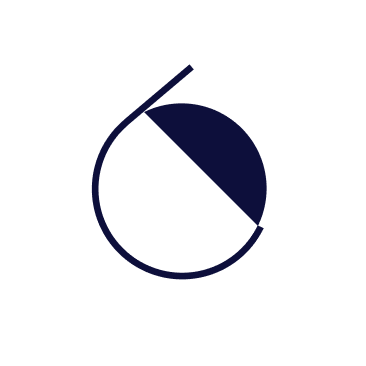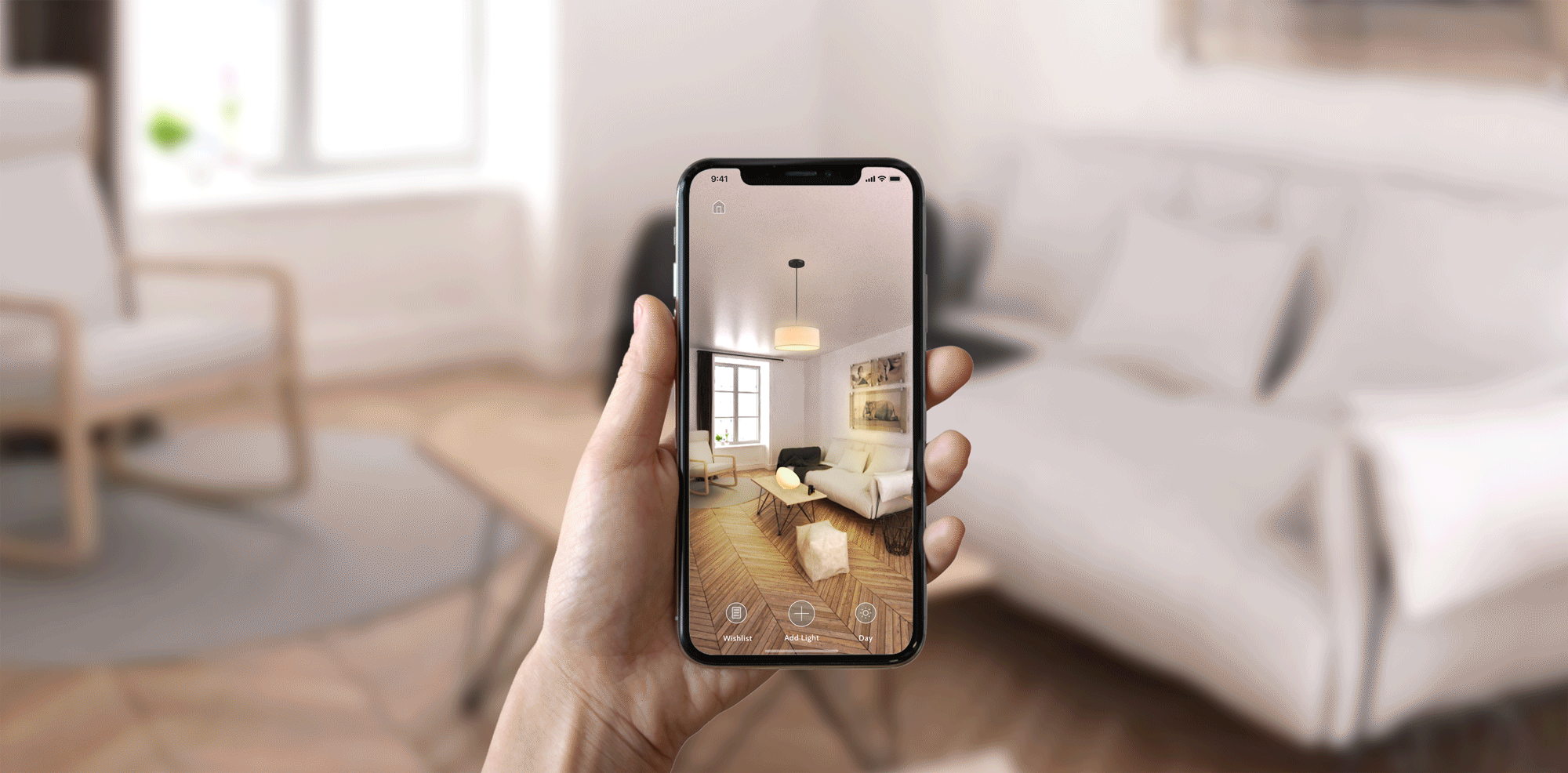Project Overview
The light bulb has been invented for more than 100 years, but people nowadays still find it difficult to buy the right light. 50% of the people feel frustrated about their lighting, and 73% people have at least one spare light at home.
This project focuses on proposing an AR app to assist users to better envision the lighting effect in their space in order to select the right product.
My Responsibilities
Date - April 2021 – June 2021 (2 months)
Team - personal work
Role - Product Design, Interaction Design, User Research
Challenges

How might we help users better envisioning the lighting effect in the space?
Users can't envision how the space will look like when they are making the purchasing decision. Through the online survey, 76% of the users were not able to light their space as they want when they purchased the light bulbs.
Research Methods
Survey
I designed an online survey focusing on
people’s buying preferences and pain points before and after the purchase.
Interview
I conducted 6 interviews with young professionals in the Seattle
area who bought at least a new light in the last 6 months.
Research Findings

1. Users can’t envision the lighting brightness and coverage.
2. Users can’t envision the lighting color in their space.
3. Users found that the lighting products were darker in their
space than they thought when they purchased it.
4. Users can’t find the info they need from the product page.
Ideation
User Journey
Based on the research, I created an user journey to help me better focus on the targeted
audiences. Jessie just moved to a new apartment in Seattle. She needed lighting that
fit her need and looks nice, but she didn’t have time do the research.

Competitive Analysis
Some manufacturers used mobile app to help users understanding their
products. Only Bega lighting and Luminaire these two app show the lighting effect in
their app, but the lighting effect is still not realistic.

Lighting effect inaccurately shown in the app
while these two apps help users to understand the size and color of the lamp in
their space, the accurate lighting information is still missing.

Opportunities

How might we help user better envision the lighting effect?
Based on the key findings, I came up with 35 ideas that may help users envision the lighting effect in their own space. I divided these solutions based on the problem each one could fix, and the final selected ideas can solve the most problems raised during the research:
Design Iterations
Paper prototype
Started with papers and pencils to map out the user flow, I then tested the flow myself a couple times before laying out on Figma.

Wireframing and User Testing
I got the feedbacks mainly about the button locations and lighting
control panel layout, so I decided to redesign these two parts.
In the next iteration, I add more finishes to the prototype, and
tested with 5 users to improve the flow.
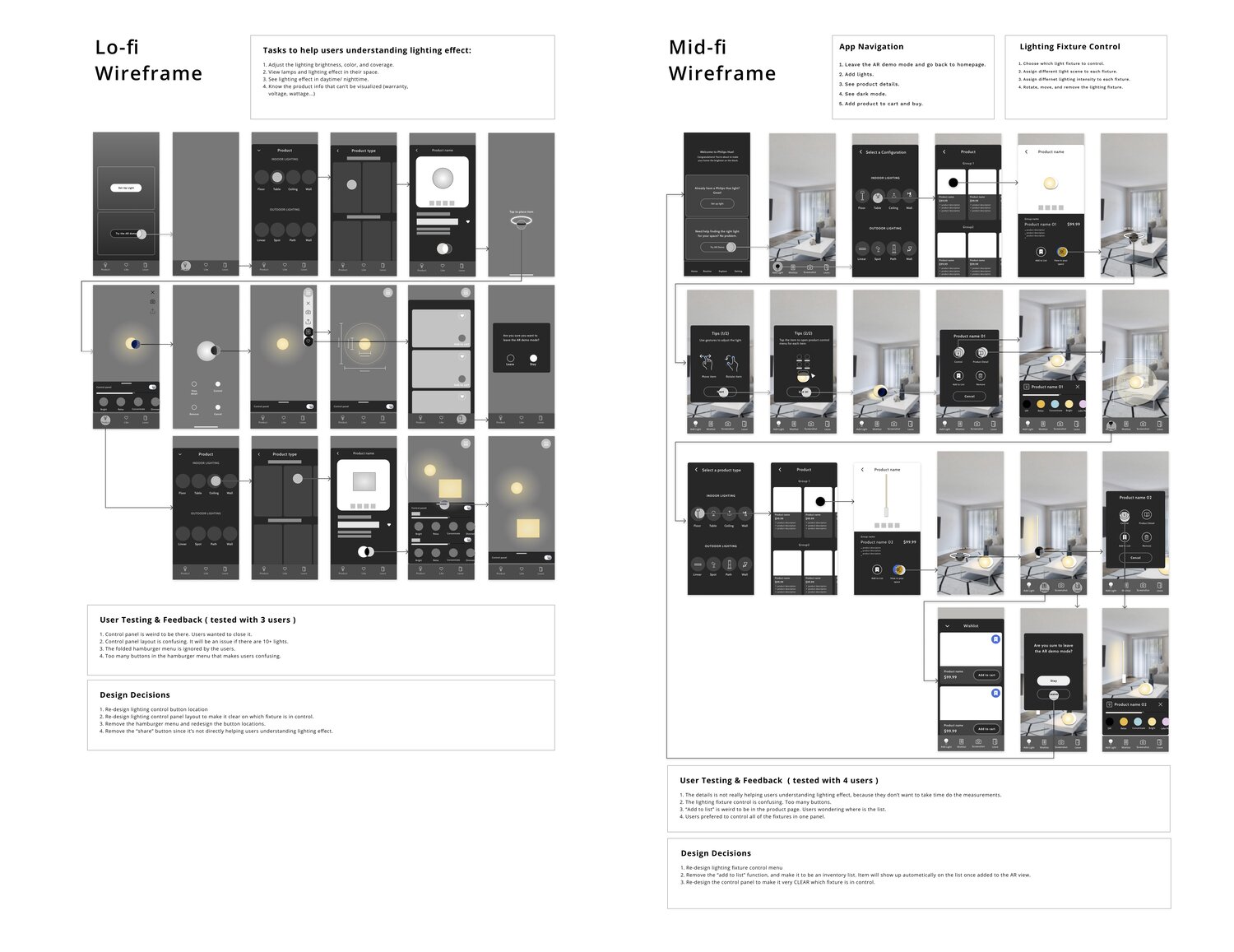
Flow Chart

Information Architecture
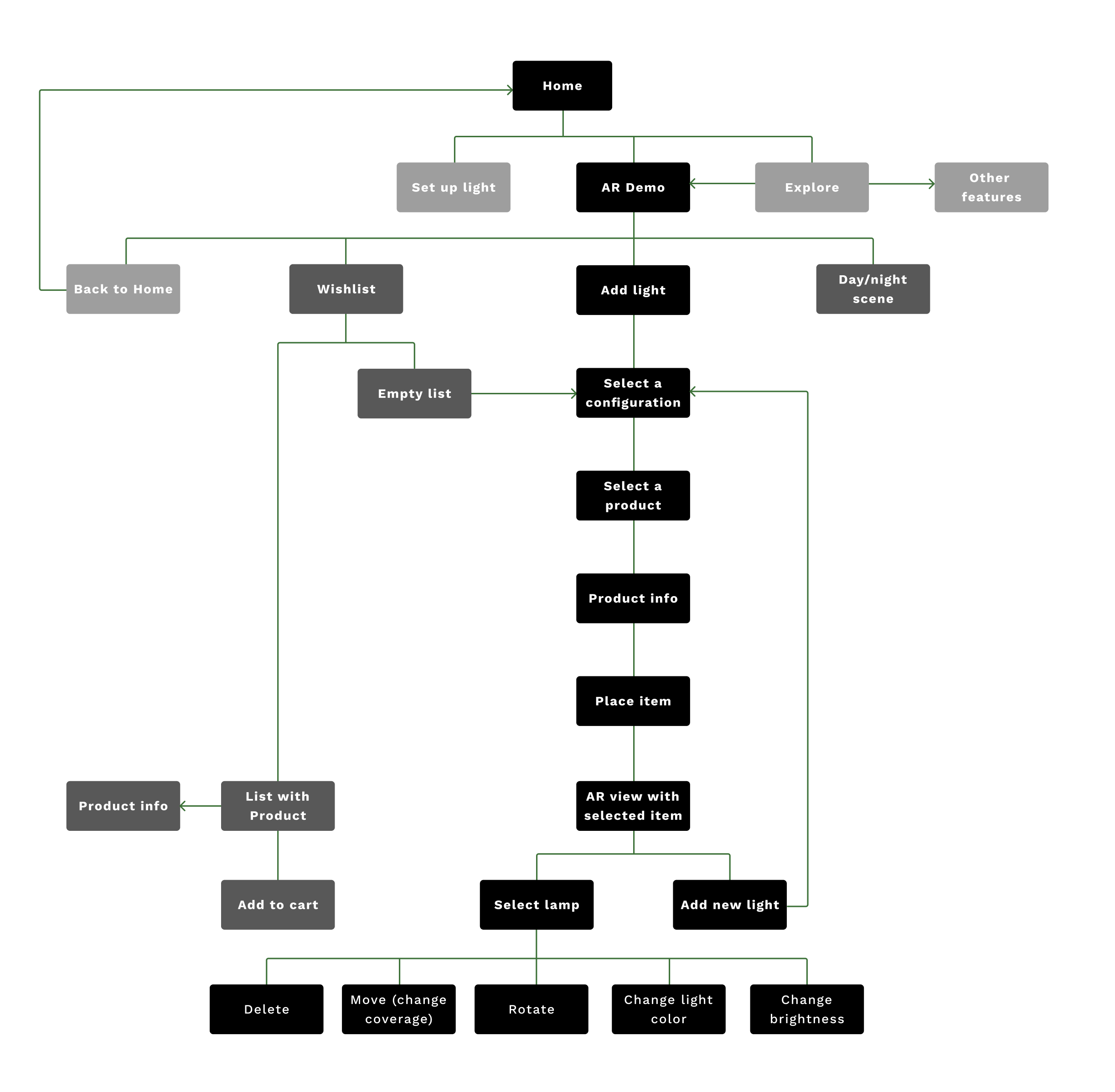
Design Solutions

Accurate lighting effect
The Philips AR can sensor the surrounding objects and imitating the lighting effect accordingly. Ain’t no tedious lumen calculating anymore.
Different Lighting Scene
Each smart light model has different capacity to brighten up the space. With the Philips AR demo, users can test with the lighting effect without all the try-and-error.

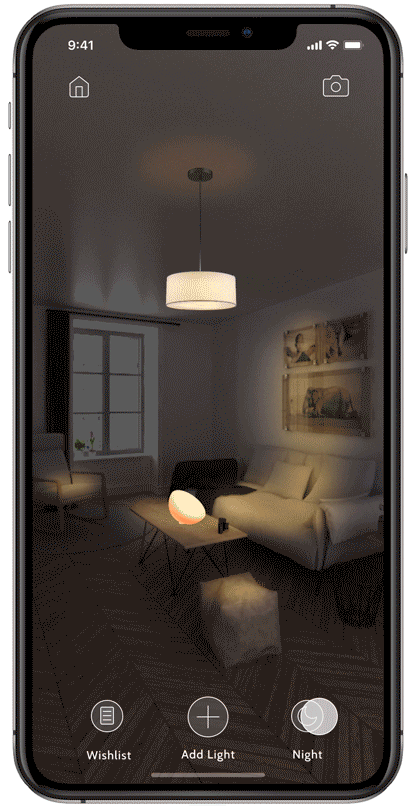
Daytime / Nighttime Lighting Effect
By detecting the surrounding object, the lighting effect can be imitated precisely. Users can understand the coverage and brightness of the lighting fixtures without doing tedious research.
Product Detail
By removing the difficult terms in front of the users, they can learn the product details and lighting effect by the photos nd simplified product features before they start the AR experience. The technical specifications are in the bottom of the page, and has a line drawing showing the dimensions.
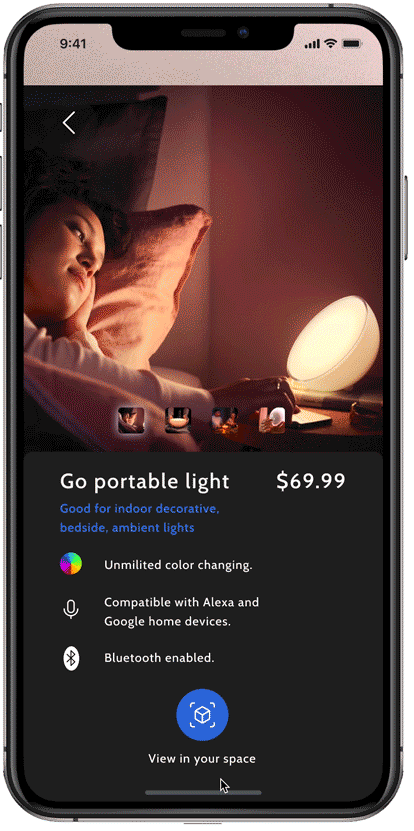
Design System
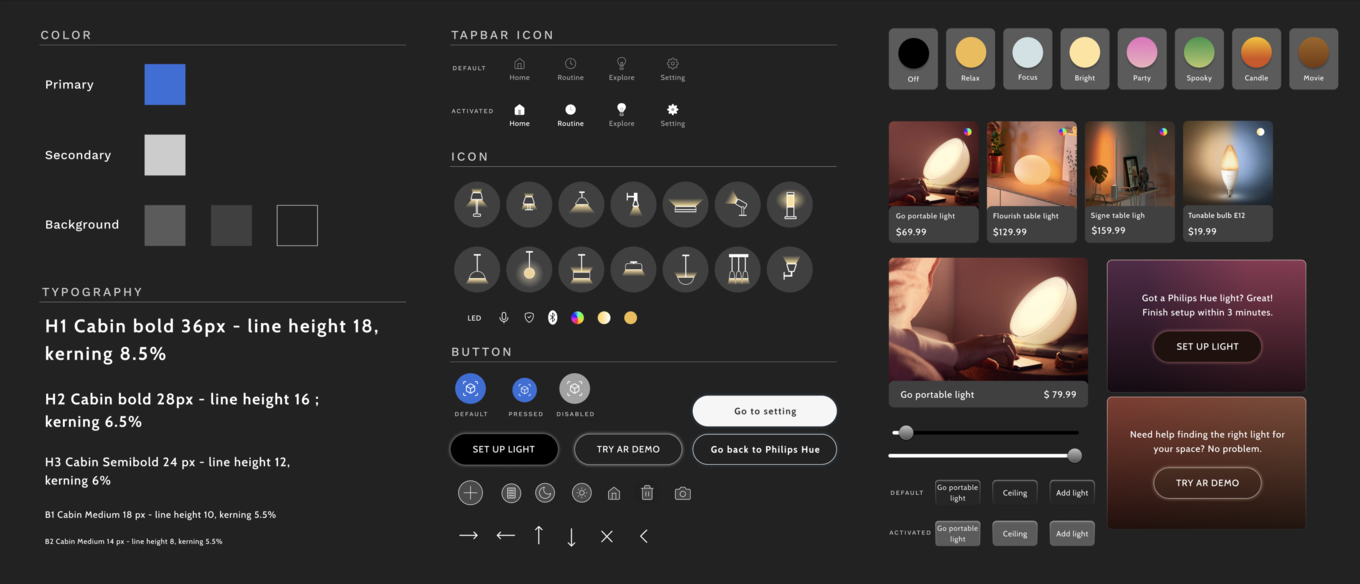
Results
“This app is helpful. I don’t want to fuzz around with the return policy just to try the lighting effect.”
I tested the final mock-up with 12 people. In the total of 12 people I tested with, 11 of 12 people thought this app can be helpful for them to select the next lamp.
Takeaway
Designers are not the users
Because of my long relationship with the architectural field,
I always have some assumptions about the user behaviors.
For example, I thought everyone has a tape measurement handy
like me. I assumed the users would want to know the detailed
measurement like I did. However, after runs and runs of user
testing, I learnt that it was important to review the persona
and user journey, so I could design for the users.
Back to Projects
